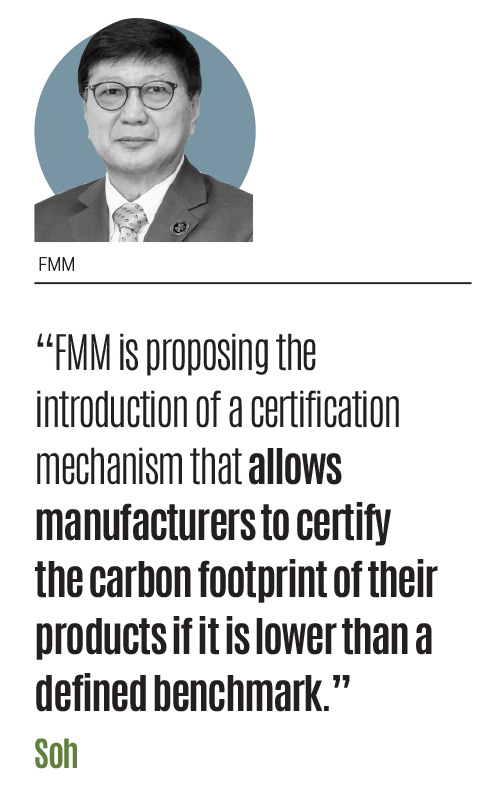This article first appeared in The Edge Malaysia Weekly on December 30, 2024 - January 12, 2025
There have been many developments and much discussion around carbon markets and carbon pricing this year, as both were touted as critical solutions in the low-carbon transition and mitigation of climate change.
The recent COP29 finally concluded negotiations on Article 6, which essentially lays down the rules for a global carbon market, through which countries can cooperate to achieve their emissions reduction targets. Soon after COP29, Malaysia signed a memorandum of understanding with South Korea under Article 6.
This year also saw Malaysia auction its first local Verra-certified carbon credits from the Kuamut Rainforest Conservation Project, and launch its own forest conservation certificate. It will soon launch a set of local standards for forest-based carbon projects under the Malaysia Forest Fund.
As the country hopes to launch more carbon projects and to seek buyers of the carbon credits, more activity can be expected on this front in the next year.
As for carbon pricing, Prime Minister Datuk Seri Anwar Ibrahimannounced during his Budget 2025 speech that a carbon tax will be introduced for three sectors by 2026. Not many details have emerged on how it will be implemented, and industry players will be watching developments in the coming year.
More information needed on carbon pricing
As the country gears up to introduce a carbon pricing mechanism, discussions are ongoing on whether an emissions trading scheme (ETS), also known as the cap-and-trade system, or a carbon tax is a better option.
While there have been claims that an ETS would be the industry’s preferred choice, the government’s decision to implement a carbon tax may be a good decision as well, according to some parties.
Beatrice Ch’ng, sustainability and climate change lead at PwC Malaysia, says a carbon tax is a more straightforward and familiar mechanism for industries to comply with, whereas an ETS might require additional learning by companies to understand the system.
“A carbon tax has a much simpler infrastructure, and I think our authorities already have experience in introducing that, and it is more certain as well, in terms of the pricing, compared to the ETS. It is also, in a way, dependent on the market price,” she says.
The carbon pricing mechanism was announced by Prime Minister Datuk Seri Anwar Ibrahim during his Budget 2025 speech. No details were given, other than that it will cover the steel, iron and energy sectors and start in 2026.
The definitive regime of the European Union’s (EU) Carbon Border Adjustment Mechanism (CBAM), which was introduced to prevent carbon leakage, will begin in 2026 as well. The first phase of the CBAM covers commodities including cement, iron and steel, aluminium, fertilisers, electricity and hydrogen. Malaysia’s main exports to the EU were machinery and appliances (62% of all exports) in 2023.
To ensure a smoother implementation of a carbon tax, Ch’ng says authorities must provide clarity for companies. Using Singapore’s system as a reference, she points out that the country has thresholds for reporting and taxable facilities.
“I think it’s really about informing the industries on how this is going to be done. It’s about — how are you going to implement it and how are you going to enforce that?” Ch’ng says.
To begin preparing for Malaysia’s carbon tax, companies must start understanding and measuring their carbon emissions. She acknowledges that managing Scope 3 emissions, which come from the value chain, will be difficult.
Smaller companies might have an even bigger hurdle when starting their compliance journeys as they might not have sufficient resources. Ch’ng suggests that small and medium enterprises (SMEs) can start by introducing smaller decarbonisation strategies. Companies should also reach out to the government for support.
One observation that Ch’ng notes is that the decarbonisation journeys of smaller companies are being kick-started by the human resources (HR) division, and she sees the department responding to the current conversations on carbon pricing.
“HR divisions, even for smaller companies, have been reaching out and asking for more information so they can also upskill their procurement teams,” she says.
With CBAM on the horizon, Ch’ng sees the carbon tax in 2026 as a bridge for Malaysian companies to respond to CBAM and to further help them in understanding their disclosures and emissions.
Ch’ng has a personal hope that the revenue generated by the carbon tax should not be used solely for research and development, but to channel it back to the important infrastructure needed to support companies in decarbonising.
Introduce certification for the carbon footprint of products
With carbon pricing mechanisms coming in, the Federation of Malaysian Manufacturers (FMM) encourages its members to comply with ESG frameworks and align with national sustainability objectives to utilise available funds in their ESG journeys.
In an email interview, FMM shares that it has been focused on extending efforts to address the European Union’s (EU) Carbon Border Adjustment Mechanism (CBAM) by particularly concentrating on objectives outlined in the Ministry of Investment, Trade and Industry’s i-ESG Framework.
“This framework has the potential to strengthen Malaysia’s position in the global market, attracting responsible investments and fostering innovation in sustainable manufacturing,” says FMM president Tan Sri Soh Thian Lai.
Additionally, FMM sees the Budget 2025 announcement of a carbon tax on the iron, steel and energy industries as another crucial initiative for its members to focus on.
FMM says the new carbon pricing mechanism is a significant step in meeting the country’s decarbonisation goals, as it addresses the critical importance of adapting to evolving international carbon regulations like CBAM.
“This tax is intended to drive businesses and consumers to reduce emissions by accounting for the cost of carbon, thereby aligning with global mechanisms like CBAM,” says Soh.
Challenges in enacting the objectives will persist, however, as the significant administrative and financial responsibilities will become an obstacle when companies are required to comply with carbon pricing mechanisms. Many companies, especially small and medium enterprises (SMEs), may lack the technical expertise and knowledge to produce quarterly reports on both direct and indirect embedded greenhouse gas emissions across their supply chain.
Larger companies will also face challenges, including higher costs to upgrade systems, hire expertise and redesign their production processes to reduce carbon emissions.
“Additionally, there is uncertainty surrounding the methodology and metrics used to calculate embedded carbon emissions. Companies have expressed concerns about the lack of clarity in some reporting requirements and the potential inconsistencies that could arise during the transitional period,” he says, concerning CBAM’s requirements.
Some of FMM’s efforts to support its members in these challenges include awareness and capacity-building sessions.
FMM members have also undertaken initiatives to enhance and green their supply chains by conducting carbon footprint assessments, adopting sustainable practices and leveraging government incentives, it says.
Soh emphasises public-private partnerships, as both FMM and its members are encouraged to foster collaboration and develop support structures, such as financial incentives and capacity-building programmes, particularly for SMEs.
“Structured and continuous engagement with the private sector is essential for the government to ensure that the implementation of carbon regulations considers industry readiness, addresses cost implications and supports long-term sustainability,” says Soh.
In light of the news surrounding the UK and Australia’s consideration of their own form of CBAM, FMM sees this as a cumulative burden on businesses that trade in international markets.
With the chance of such measures being put in place, Soh suggests a solution to address this. “FMM is proposing the introduction of a certification mechanism that allows manufacturers to certify the carbon footprint of their products if it is lower than a defined benchmark.
“This mechanism would enable producers of low-emission goods to demonstrate compliance and gain a competitive advantage in international markets.”
FMM also believes that the complementary implementation of an ETS, in addition to a carbon tax, could help industries transition more effectively.
“An ETS would allow businesses to manage their emissions more efficiently by trading carbon credits, providing flexibility and market-driven solutions to meet emissions targets,” says Soh. — Stories by Chelsea Lee Jia Shi
Save by subscribing to us for
your print and/or
digital copy.
P/S: The Edge is also available on
Apple's App Store and
Android's Google Play.



